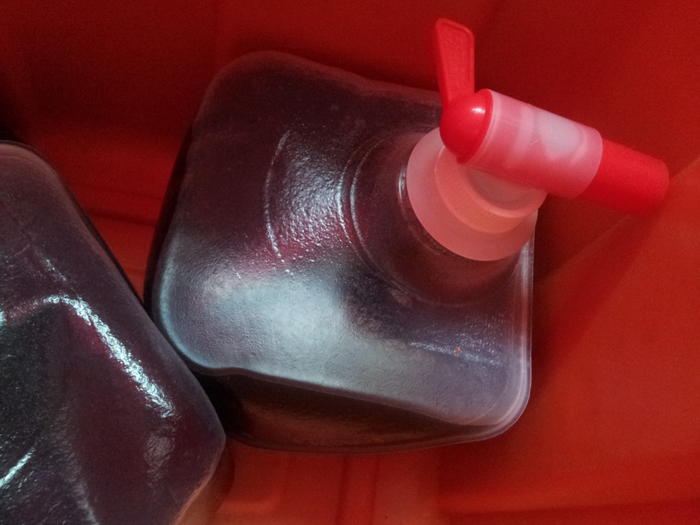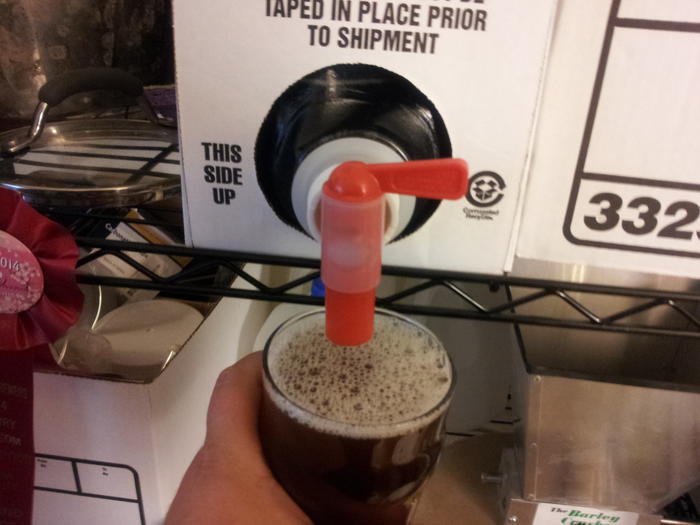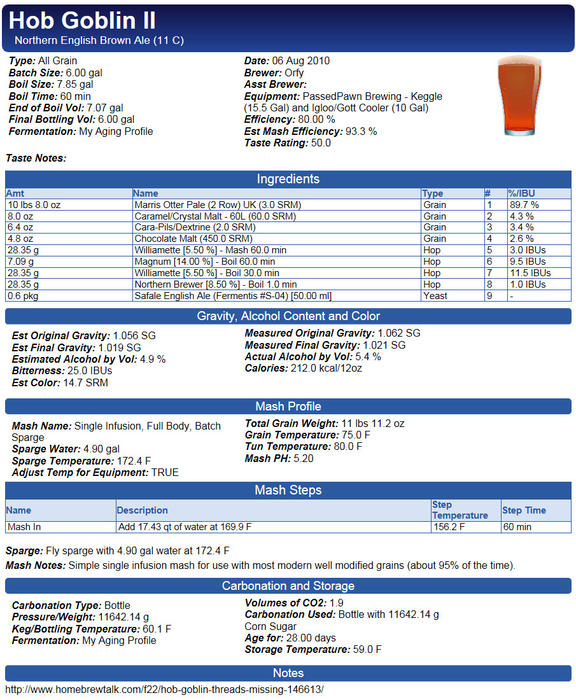I just tapped a Pale Mild I did. First time putting my own beer on "cask" via polypins (and poured via gravity). I'm loving the beer. And for you folks who want to do cask at home, but like me, you won't have the ability to mow through a whole batch before it goes stale without your wife divorcing you for being an alcoholic, check out the polypin route. I'm amazed how easy it is and how well it works. About 5.2 gallons into the fermenter, about 4.7 gallons after loss to yeast cake primed to about 1.2 volumes into 5 separate one gallon Cubitainers (Northern Brewer sells them, I bought mine from US Plastics) leaving just a little headspace in each one, and then compressed down to purge the oxygen and sealed up, allowed to balloon up fully, vented to keep em from bursting, let em settle for a bit, and pour. I'm not sure how long the shelf life will be, but given than I killed the first pin in 2 days (easy with a 2.9% Mild), I'm not too worried about the shelf life. They're all pretty much fully ballooned at this point. I tapped the first one after 5 days. I'm gonna give it another week or so before tapping the others.
Recipe for the Pale Mild I did:
5 lbs Pale Malt, Maris Otter (Thomas Fawcett) (3.0 SRM) Grain 1 81.6 %
8.0 oz Biscuit (Dingemans) (22.5 SRM) Grain 2 8.2 %
8.0 oz Crystal Light - 45L (Crisp) (45.0 SRM) Grain 3 8.2 %
2.0 oz Pale Chocolate (Thomas Fawcett) (215.0 SRM) Grain 4 2.0 %
0.50 oz Challenger [8.90 %] - Boil 60.0 min Hop 5 20.5 IBUs
1.0 pkg West Yorkshire Ale (Wyeast Labs #1469) Yeast 6 -
Gravity, Alcohol Content and Color
Est Original Gravity: 1.036 SG
Est Final Gravity: 1.013 SG
Estimated Alcohol by Vol: 3.0 %
Bitterness: 20.5 IBUs
Est Color: 9.6 SRM
Measured Original Gravity: 1.035 SG
Measured Final Gravity: 1.013 SG
Actual Alcohol by Vol: 2.9 %
Calories: 116.3 kcal/12oz
Mashed at 158 and fermented at 68, with no yeast starter.
Out of one polypin, I got 6 full Imperial pints of clear beer, and about a half pint of yeasty dregs at the end.
Given that I mostly brew English beers, and I love cask beer, I may never end up switching to kegs. Hah.
 The color looks right for the bitters I've been making lately. I agree that if you can bring in some Maris Otter or Halcyon you should get a pretty authentic base going.
The color looks right for the bitters I've been making lately. I agree that if you can bring in some Maris Otter or Halcyon you should get a pretty authentic base going. 



![Craft A Brew - Safale S-04 Dry Yeast - Fermentis - English Ale Dry Yeast - For English and American Ales and Hard Apple Ciders - Ingredients for Home Brewing - Beer Making Supplies - [1 Pack]](https://m.media-amazon.com/images/I/41fVGNh6JfL._SL500_.jpg)



























































